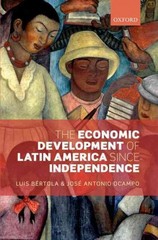Opportunity cost_ Is the total amount given up when a person makes a choice. Is the value of the next-best alternative that is given up when a choice is made. Only includes monetary costs and benefits. Is the same for everyone. Question 2 (2.5 points) () Listen How will an increase in aggregate demand most likely affect the economy in the long run? Because output is above full-employment level of output, unemployment is below the natural rate of unemployment. The nominal wage will be pushed downwards thus reducing the cost of production and aggregate supply increases. Real GDP returns to full employment and the price level decreases. Because output is above full-employment level of output, unemployment is below the natural rate of unemployment. The nominal wage will be pushed upward thus increasing the cost of production and aggregate supply decreases. Real GDP returns to full employment and the price level increases Because output is below full-employment level of output, unemployment is above the natural rate of unemployment. The nominal wage will be pushed downwards thus reducing the cost of production and aggregate supply increases. Real GDP returns to full employment and the price level increase. Because output is above full-employment level of output, unemployment is below the natural rate of unemployment. The nominal wage will be pushed upward thus increasing the cost of production and aggregate supply decreases. Real GDP returns to full employment and the price level decrease. Question 3 (2.5 points) Listen How does a decrease in the discount rate by the Federal Reserve affect the money supply and the interest rate? The decrease of the discount rate encourages banks to borrow from the Federal Reserve. Banks increase their lending to customers thus decreasing the money supply and increasing the interest rate. The decrease of the discount rate discourages banks from borrowing from the Federal Reserve. Banks increase their lending to customers thus increasing the money supply and increasing the interest rate. The decrease of the discount rate discourages banks to borrow from the Federal Reserve. Banks decrease their lending to customers thus decreasing the money supply and increasing the interest rate. The decrease of the discount rate encourages banks to borrow from the Federal Reserve. Banks increase their lending to customers thus increasing the money supply and decreasing the interest rate. Question 4 (2.5 points) ) Listen Actual GDP in a country is estimated to be $150 billion and potential GDP be below actual GDP. Prices are virtually unchanged from one year ago. Unemployment is 3 percent of the civilian work force, much lower than it has been in many years. Which of the following policies would be the most appropriate for improving these economic conditions? decreases in corporate and personal income taxes decreases in interest rates by the central bank reductions in the federal debt decreases in reserve requirements on deposits at commercial banks to protect depositors







